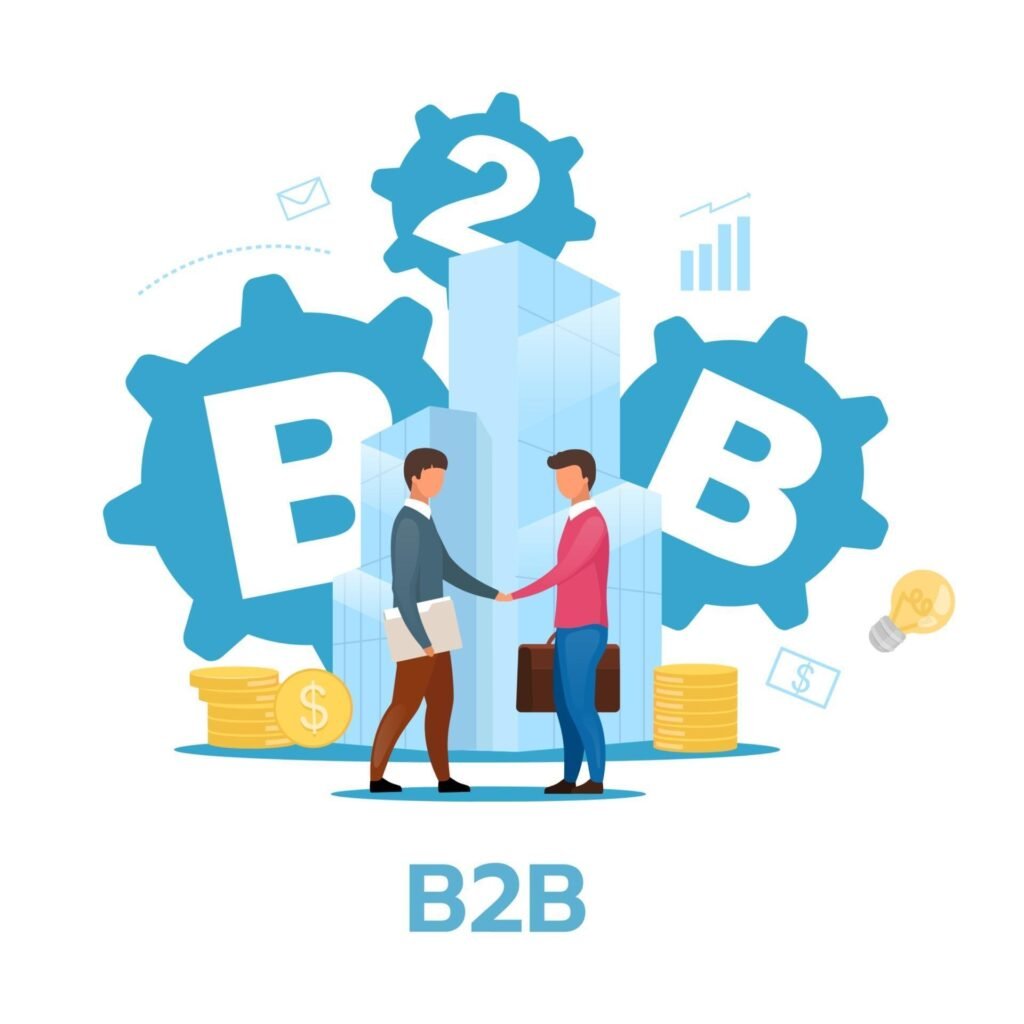In today’s competitive marketplace, simply generating leads isn’t enough. To truly drive growth, companies need to nurture those leads effectively, building relationships and trust over time until they’re ready to make a purchase. This is where integrating sales enablement with marketing becomes essential. By aligning these two functions, you can create a seamless lead nurturing process that guides prospects through every stage of their journey, from initial interest to final purchase.
Sales enablement isn’t just about providing sales teams with training and materials; it’s about equipping them with the right insights, tools, and content to connect with leads in a meaningful way. And when sales enablement is integrated with marketing, both teams can work together to create a smooth, cohesive experience that resonates with leads at each stage. In this article, we’ll explore practical steps for aligning sales enablement with marketing to drive more effective lead nurturing, build stronger customer relationships, and ultimately boost revenue.
Why Integrate Sales Enablement with Marketing?
Sales enablement and marketing are naturally complementary functions. Marketing creates content that attracts leads and keeps them engaged, while sales enablement ensures that the sales team has the resources to continue nurturing those leads effectively. When these two functions are aligned, it ensures that every touchpoint with a lead is intentional, consistent, and valuable.
The benefits of integrating sales enablement with marketing include:
- Improved Lead Quality: Marketing can provide leads that are better qualified and closer to a purchase decision.
- Enhanced Customer Experience: A seamless handoff from marketing to sales makes for a smoother, more personalized journey.
- Higher Conversion Rates: Coordinated efforts between marketing and sales can reduce lead drop-off and increase conversions.
- More Efficient Use of Resources: Shared insights and tools allow both teams to work smarter, not harder, making the most of time and budget.
When sales enablement and marketing are truly integrated, you create a cohesive lead nurturing process that improves customer satisfaction, reduces friction, and ultimately drives better results.
Step 1: Establish Clear Communication and Shared Goals
For marketing and sales enablement to work together effectively, they need to start by understanding each other’s goals, priorities, and challenges. Clear communication between these teams ensures they’re aligned and working toward the same objectives.
Set Up Regular Cross-Functional Meetings
Hold regular meetings where marketing and sales enablement teams can share updates, discuss challenges, and align on strategies. These meetings keep everyone in the loop and provide a platform for sharing insights, feedback, and progress.
For example, if marketing is planning a new content campaign to attract leads in a specific industry, sales enablement should be aware so they can prepare relevant sales materials. These meetings ensure both teams are informed and ready to support each other, creating a smoother experience for leads.
Define and Align on Shared Goals
Both teams should work together to define shared goals and key performance indicators (KPIs) that align with the lead nurturing process. These could include metrics like lead quality, lead-to-conversion rates, and time spent nurturing leads. By setting shared goals, marketing and sales enablement create a unified approach to lead nurturing.
For instance, if the shared goal is to increase the percentage of leads moving from the awareness to the consideration stage, both teams can brainstorm strategies to achieve this, such as creating more educational content or improving lead scoring.
Step 2: Develop a Unified Lead Scoring System

A critical step in integrating sales enablement and marketing is establishing a unified lead scoring system. Lead scoring assigns values to leads based on factors like engagement, demographic information, and purchase intent. This system helps both teams identify which leads are ready for a sales handoff and which need more nurturing.
Create Scoring Criteria Based on Lead Behavior and Profile
Work together to define lead scoring criteria that reflect your ideal customer profile and behaviors that indicate buying intent. These criteria might include factors like website visits, email opens, content downloads, and interactions with specific product pages.
For example, a lead who has downloaded several product guides and attended a webinar may receive a high score, indicating strong interest. On the other hand, a lead who has only signed up for a newsletter might receive a lower score. By establishing clear criteria, you ensure both teams have a consistent understanding of what makes a lead ready for sales engagement.
Regularly Review and Adjust the Scoring Model
As customer behavior and market dynamics evolve, it’s essential to review and adjust your lead scoring model to ensure it remains accurate. Regularly reviewing lead scores with both teams ensures that sales enablement receives leads at the right time and marketing can adjust strategies based on the latest data.
For instance, if you notice that high-scoring leads are not converting as expected, it may indicate a need to adjust scoring criteria or reconsider what actions truly indicate buying intent. By continuously refining the lead scoring model, you improve the quality of leads moving through the pipeline.
Step 3: Create a Content Strategy that Supports Both Marketing and Sales
Content is a core component of lead nurturing, and it needs to support both marketing and sales efforts. Marketing content builds awareness and trust, while sales content provides deeper insights that help leads make informed decisions. By developing a content strategy that serves both teams, you ensure that leads receive the right information at the right time.
Develop Content for Each Stage of the Buyer’s Journey
Create content specifically tailored to the stages of the buyer’s journey: awareness, consideration, and decision. Marketing can focus on content that educates and engages in the early stages, while sales enablement uses more targeted, solution-oriented content as leads move toward a purchase decision.
For example:
- Awareness Stage: Marketing can create blog posts, infographics, and introductory guides to attract and educate potential leads.
- Consideration Stage: More detailed content like whitepapers, case studies, and webinars help leads evaluate solutions.
- Decision Stage: Sales enablement can use product demos, personalized proposals, and ROI calculators to assist leads in making a final choice.
This approach ensures that leads receive the appropriate level of information at each stage, enhancing their experience and moving them closer to a purchase.
Share and Organize Content in a Central Repository
Establish a central content repository where both marketing and sales teams can access, organize, and share resources. Platforms like Google Drive, SharePoint, or dedicated sales enablement tools (e.g., HubSpot, Seismic) make it easy to store and manage content, ensuring everyone has access to the latest materials.
For example, organize content folders by buyer stage, content type, or industry focus. This organization makes it easy for sales reps to find relevant resources quickly and helps marketing track content usage, allowing both teams to collaborate more effectively.
Step 4: Use Data and Analytics to Refine the Lead Nurturing Process

Data is the foundation of effective lead nurturing. By tracking engagement metrics, conversion rates, and other key data points, marketing and sales enablement can continuously refine their strategies and improve lead nurturing outcomes.
Track Key Metrics Across the Lead Nurturing Funnel
Identify metrics that give insight into lead behavior at each stage of the funnel. Marketing might track website visits, email engagement, and content downloads, while sales enablement could focus on metrics like lead response times, call-to-meeting ratios, and conversion rates.
For instance, if data shows that a high percentage of leads engage with case studies but drop off before requesting a demo, marketing can focus on creating more conversion-driven content, while sales enablement might follow up with targeted emails offering demos to those who viewed the case study.
Use Data to Identify and Address Bottlenecks
Analytics can help pinpoint where leads are dropping off or losing interest in the funnel. For example, if you notice leads are consistently disengaging at the consideration stage, it could indicate a need for more detailed content or a different approach in follow-ups.
For instance, if there’s a bottleneck at the consideration stage, marketing might create additional educational content, while sales enablement could introduce tailored outreach to help move leads forward. Regularly analyzing data ensures both teams address issues promptly and keep leads moving through the funnel.
Step 5: Implement Automation for Consistent, Timely Communication
Automation tools like CRM and marketing automation platforms play a crucial role in ensuring that leads receive timely, relevant communication without overwhelming sales reps or marketing teams. Automation keeps leads engaged, personalized, and nurtured even as they move through different stages of the journey.
Automate Lead Nurturing Sequences with Personalized Content
Create automated email sequences that nurture leads based on their behaviors and stage in the buyer’s journey. For example, if a lead downloads an eBook, they can be added to an email sequence that provides additional resources relevant to their interests, gradually moving them closer to a sales conversation.
For instance, a lead who interacts heavily with content on product pricing might receive a sequence that introduces them to more detailed pricing guides, ROI calculators, and a call to schedule a demo. Automation ensures that each lead receives targeted, valuable content at the right time, without manual intervention.
Use CRM Integration for Seamless Handoffs and Follow-Ups
Integrate your CRM with marketing and sales enablement tools to facilitate seamless handoffs and follow-ups. When a lead reaches a high score or moves to the decision stage, automated alerts can notify sales reps to follow up with a personalized message.
For example, a CRM alert might notify a sales rep when a lead reaches a certain engagement score, indicating readiness for direct outreach. This seamless integration ensures that leads don’t get overlooked, making handoffs smoother and follow-ups more timely.

Related: Check out our free tools:

Step 6: Create Sales Enablement Materials That Support Lead Nurturing
Sales enablement materials are essential for bridging the gap between marketing efforts and sales engagement. These resources empower sales reps with the information and tools they need to continue nurturing leads effectively, helping to build trust and guide prospects toward a purchase.
Develop Tools for Sales Reps to Address Common Objections
Work with sales enablement to create resources that help sales reps address typical objections and pain points. These might include product comparison sheets, objection-handling scripts, or detailed FAQ documents that sales reps can use in conversations.
For example, if leads frequently raise concerns about pricing, create a resource that explains your product’s value relative to competitors. This enables sales reps to confidently address objections and emphasize your product’s unique value, making it easier for leads to overcome hesitation.
Create Visual Assets that Highlight Product Benefits and ROI
Visual aids like infographics, product demos, and ROI calculators help leads understand the tangible benefits of your product. These materials make it easier for sales reps to illustrate value, answer questions, and build trust, especially with leads who are still deciding between options.
For instance, an infographic showing how your product saves time or reduces costs can be a powerful tool for sales reps, especially when addressing decision-makers. These materials enhance lead nurturing by providing concrete evidence of your product’s value.
Step 7: Review, Refine, and Optimize the Integration Process

Integrating sales enablement with marketing for seamless lead nurturing is an ongoing process. Regularly reviewing the effectiveness of your strategies allows both teams to learn from experience, make improvements, and optimize their approach.
Hold Quarterly Reviews to Assess Alignment and Results
Schedule quarterly reviews where marketing and sales enablement come together to evaluate performance, assess alignment, and discuss what’s working (or not working) in the lead nurturing process. This feedback loop enables continuous improvement and keeps both teams on the same page.
For example, review KPIs like lead conversion rates, engagement levels, and content effectiveness. If certain content consistently drives conversions, marketing can prioritize similar pieces, while sales enablement can provide feedback on content gaps or areas needing more support.
Stay Agile and Ready to Adapt Strategies
Markets, customers, and sales processes evolve over time. Stay agile and be prepared to adjust your lead nurturing strategies based on new data, shifting customer needs, or changes in the competitive landscape. Flexibility allows both marketing and sales enablement to stay relevant and effective.
For instance, if customer preferences shift toward more virtual interactions, consider adding more webinars, video content, or virtual demos to the nurturing process. By remaining responsive to changes, you keep your lead nurturing strategy fresh and impactful.
Step 8: Foster a Culture of Collaboration and Continuous Improvement
To truly integrate sales enablement with marketing for seamless lead nurturing, it’s essential to cultivate a culture where both teams view collaboration as an ongoing journey, not a one-time task. This mindset encourages both sales and marketing to work together proactively, constantly seeking ways to improve processes, enhance content, and refine strategies based on real-time feedback.
Encourage Open Feedback Loops Between Teams
Creating an open feedback loop allows both teams to share insights from their interactions with leads, helping each other improve messaging, content, and follow-up strategies. For example, sales reps can share feedback from recent calls, indicating which marketing materials were most effective and where there are gaps in content that could better address customer questions or objections.
For instance, if sales reps frequently hear objections that aren’t fully addressed in marketing content, they can relay this information to marketing, prompting adjustments to existing materials or the creation of new resources. This ongoing feedback helps both teams improve and ensures that lead nurturing becomes increasingly effective over time.
Recognize and Celebrate Collaborative Successes
Celebrate moments where collaboration between marketing and sales enablement has led to significant wins, such as a particularly successful campaign, higher conversion rates, or improved lead quality. Recognizing these achievements helps reinforce the value of integration and motivates both teams to keep up the collaborative efforts.
For example, if a campaign developed through sales-marketing collaboration results in a significant boost in conversions, share this success in a company-wide update or team meeting. Highlighting the specific contributions of both teams showcases the power of integration and reinforces a culture of collaboration.
Step 9: Leverage Technology to Streamline and Strengthen Integration

The right technology stack plays a pivotal role in supporting the integration of sales enablement with marketing, providing both teams with the tools needed for efficient lead nurturing. By adopting the right CRM and sales enablement platforms, automation tools, and analytics software, you create a streamlined workflow where insights, data, and resources flow seamlessly between marketing and sales.
Choose an Integrated CRM and Marketing Automation Platform
Invest in a CRM system that integrates with your marketing automation tools, making it easy to track lead progress, analyze engagement, and trigger actions based on lead behavior. Platforms like HubSpot, Salesforce, or Marketo enable both teams to access the same data, set up automated workflows, and respond to leads with relevant content.
For example, a CRM that records every touchpoint allows both teams to see a lead’s journey in real-time, providing context on which content they’ve engaged with, their past interactions with sales, and any follow-up actions needed. This shared platform keeps everyone aligned and reduces redundant efforts, making the lead nurturing process smooth and efficient.
Use Analytics Tools to Measure Success and Adjust Strategies
Analytics platforms provide insights into how well your integrated strategies are working. By tracking lead engagement, conversion rates, and content performance, you can identify what’s effective and what needs refining. Regularly reviewing this data allows both teams to make data-driven decisions that enhance the lead nurturing process.
For instance, if analytics show that leads who engage with certain types of content are more likely to convert, marketing can create more similar content while sales enablement prepares tailored outreach for leads showing interest in that topic. Data-driven insights help both teams work smarter, using resources more efficiently to drive results.
Step 10: Continually Refine Buyer Personas Based on Real-Time Insights
As you nurture leads, you gather valuable information that can help refine your understanding of your target audience. By working together, sales enablement and marketing can continually update buyer personas based on real-world insights, ensuring that messaging, content, and outreach are consistently relevant and aligned with current customer needs.
Use Sales Insights to Update Persona Pain Points and Preferences
Sales reps often hear firsthand about the challenges and priorities of potential customers, providing a direct window into the evolving needs of your target audience. Encourage sales to share these insights with marketing, who can use them to refine buyer personas and update content strategies.
For example, if sales reps notice that a specific industry segment is increasingly concerned about cost-effectiveness, marketing can adjust messaging to address value and return on investment. By updating personas based on sales insights, both teams ensure that lead nurturing efforts are always relevant and customer-focused.
Regularly Validate and Evolve Personas with Data
Marketing can use data from campaigns, website analytics, and lead engagement to validate and refine personas. Review this data regularly to ensure that buyer personas accurately reflect the behavior and needs of actual leads, adjusting targeting strategies accordingly.
For example, if data reveals that a new segment is engaging with specific content, consider creating a new persona or refining an existing one to capture this segment’s unique needs. Regular persona updates keep the lead nurturing process relevant, helping marketing and sales resonate more effectively with leads.
Conclusion
When sales enablement and marketing are fully aligned, they create a powerful, unified approach to lead nurturing that is consistent, relevant, and effective. By establishing clear communication, developing a shared lead scoring system, creating valuable content, leveraging data, and implementing automation, you create a lead nurturing process that guides prospects naturally from awareness to purchase.
This alignment does more than just boost conversions; it creates a better experience for leads, fostering trust and establishing your brand as reliable, customer-focused, and responsive. Start integrating sales enablement with marketing today, and watch as your lead nurturing strategy becomes smoother, more effective, and ultimately, more successful in turning leads into loyal customers.
READ NEXT:
- Are Vanity Metrics Killing Your Marketing Efficiency? Here’s What to Track Instead
- Pinpointing Digital Marketing ROI: Why Your Metrics Aren’t Telling the Full Story
- Unlocking Real ROI in Digital Marketing: The Hidden Costs Draining Your Budget
- How Misaligned Marketing Funnels Are Blocking Your ROI Potential
- Best Digital Marketing Agency In Santa Ana, California
- Best Digital Marketing Agency In San Francisco, California





















